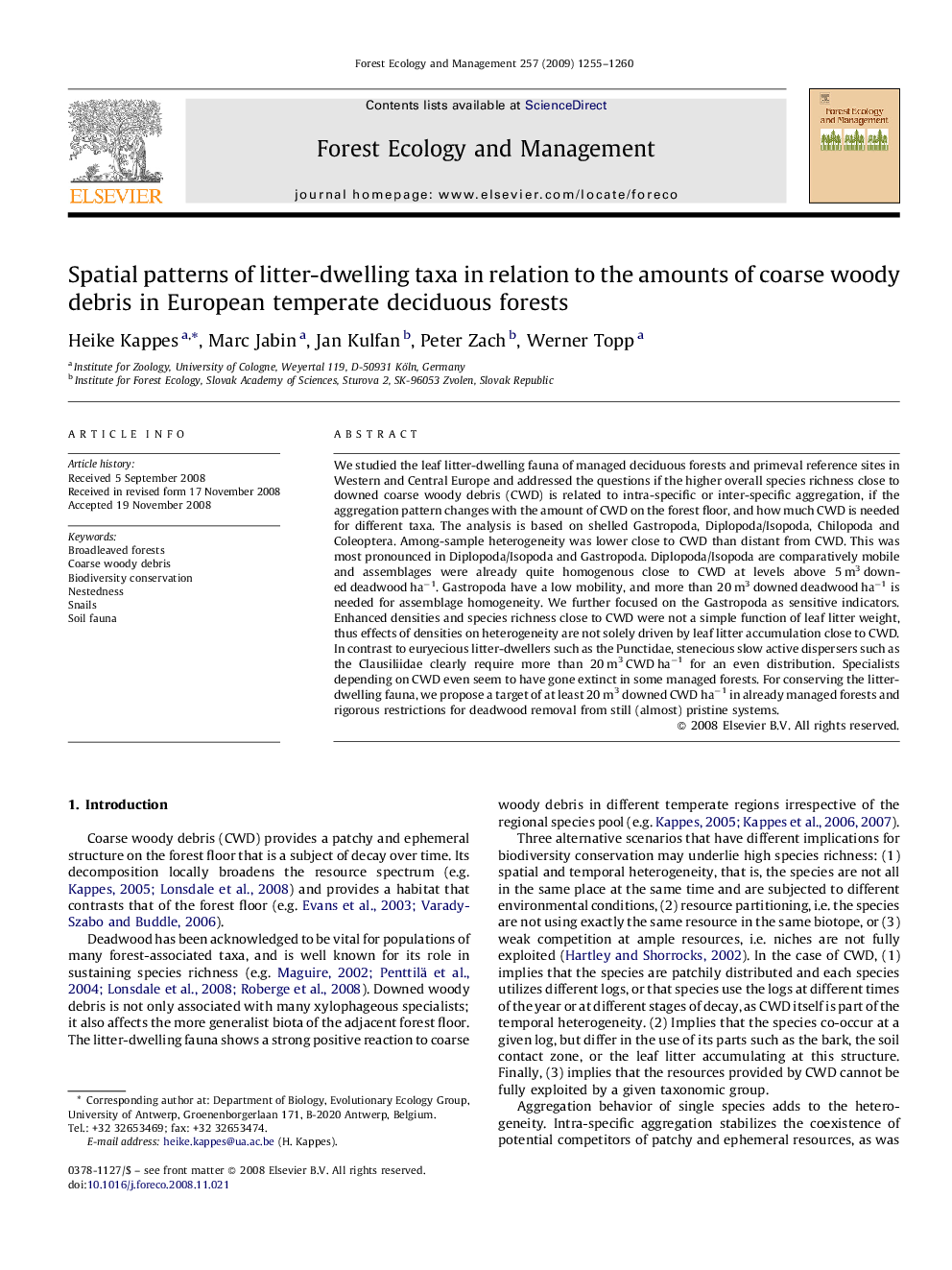| Article ID | Journal | Published Year | Pages | File Type |
|---|---|---|---|---|
| 88597 | Forest Ecology and Management | 2009 | 6 Pages |
We studied the leaf litter-dwelling fauna of managed deciduous forests and primeval reference sites in Western and Central Europe and addressed the questions if the higher overall species richness close to downed coarse woody debris (CWD) is related to intra-specific or inter-specific aggregation, if the aggregation pattern changes with the amount of CWD on the forest floor, and how much CWD is needed for different taxa. The analysis is based on shelled Gastropoda, Diplopoda/Isopoda, Chilopoda and Coleoptera. Among-sample heterogeneity was lower close to CWD than distant from CWD. This was most pronounced in Diplopoda/Isopoda and Gastropoda. Diplopoda/Isopoda are comparatively mobile and assemblages were already quite homogenous close to CWD at levels above 5 m3 downed deadwood ha−1. Gastropoda have a low mobility, and more than 20 m3 downed deadwood ha−1 is needed for assemblage homogeneity. We further focused on the Gastropoda as sensitive indicators. Enhanced densities and species richness close to CWD were not a simple function of leaf litter weight, thus effects of densities on heterogeneity are not solely driven by leaf litter accumulation close to CWD. In contrast to euryecious litter-dwellers such as the Punctidae, stenecious slow active dispersers such as the Clausiliidae clearly require more than 20 m3 CWD ha−1 for an even distribution. Specialists depending on CWD even seem to have gone extinct in some managed forests. For conserving the litter-dwelling fauna, we propose a target of at least 20 m3 downed CWD ha−1 in already managed forests and rigorous restrictions for deadwood removal from still (almost) pristine systems.
